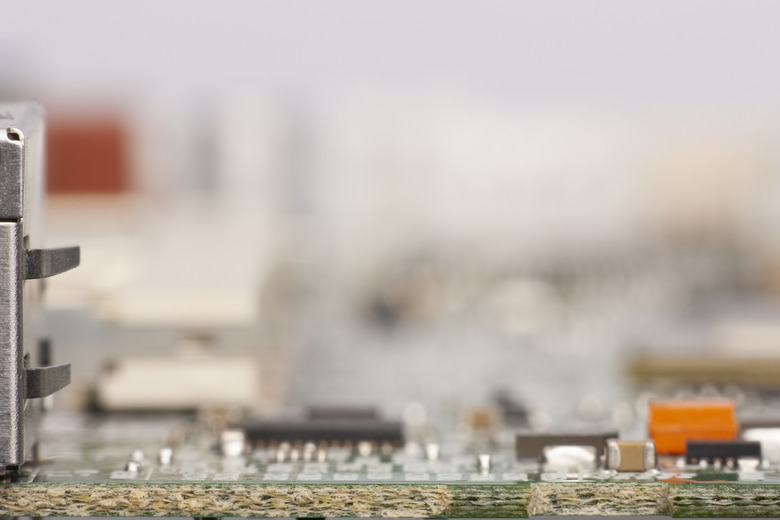How To Learn To Read Surface Mount Capacitors
There are many different capacitors that have many different sorts of markings. Voltage, polarity, tolerance and capacitance can be displayed in different ways from one capacitor type to another or from one manufacturer to another. This article will guide you through the basics of how to read the most common capacitor markings.
Step 1
Learn the meaning of picofarads, nanofarads and microfarads. All three are terms for measuring the strength of a capacitor–1,000 picofarads (pF)=1 nanofarad (nF) and 1,000 nanofarads=1 microfarad (?F).
Step 2
Learn to read the value and voltage. For example, a capacitor that reads \"4.7 ?F 25V\" has a capacitance of 4.7 microfarads and can work with up to 25 volts.
Step 3
Learn to read 2-digit capacitors. Ceramic disc capacitors are often labeled with just two numbers. if the value is less than one, these capacitors are generally measured in microfarads. If the value is more than one, it indicates a value in picofarads. For example, a capacitor that reads \".01\" will have a capacitance of 0.01 ?F (microfarads), or 10,000 pF (picofarads). A capacitor labeled \"15\" will have a value of 15pF.
Step 4
Learn to read capacitors labeled with n, p, or ? and one or two numbers. When capacitors are labeled in this way, the letter represents both the unit and the decimal point between the numbers. For example, a capacitor labeled \"4n7\" has a value of 4.7 nanofarads. A capacitor labeled \"p1\" has a value of 0.1 picofarads.
Step 5
Learn the significance of the three-number code. Many capacitors are labeled with three numbers and, usually, a letter. The number represents the value and a multiplier, all expressed in picofarads. For example, a capacitor that reads \"122\" would have a value of 12 plus two zeros, or 1200, pF. A capacitor marked \"475\" would have a value of 4,700,000 pF, or 4.7 ?F.
Step 6
Learn the exceptions to the rule in Step 5. The multipliers eight and nine actually decrease, rather than increase, the value of the capacitor. If the third number is eight, you multiply the number by 0.01. If it is nine, you multiply by 0.1. For example, a capacitor labeled \"229\" would have a value of 2.2 picofarads.
Step 7
Learn the tolerance codes. \"F\" indicates a tolerance of 1%, \"J\" of 5%, and \"K\" of 10%. To see more tolerances, follow the link below.
TL;DR (Too Long; Didn't Read)
Although capacitors can get pretty exotic, the Steps above covers the common labellings.
Warning
Many capacitors are specialized. If you are replacing a capacitor, be sure to use the same type and to watch out for polarity. Replacing a ceramic capacitor with a polarized capacitor, for example, can have nasty, and potentially explosive, results. The same goes
Cite This Article
MLA
David, Isaiah. "How To Learn To Read Surface Mount Capacitors" sciencing.com, https://www.sciencing.com/learn-read-surface-mount-capacitors-4480564/. 13 August 2008.
APA
David, Isaiah. (2008, August 13). How To Learn To Read Surface Mount Capacitors. sciencing.com. Retrieved from https://www.sciencing.com/learn-read-surface-mount-capacitors-4480564/
Chicago
David, Isaiah. How To Learn To Read Surface Mount Capacitors last modified March 24, 2022. https://www.sciencing.com/learn-read-surface-mount-capacitors-4480564/
